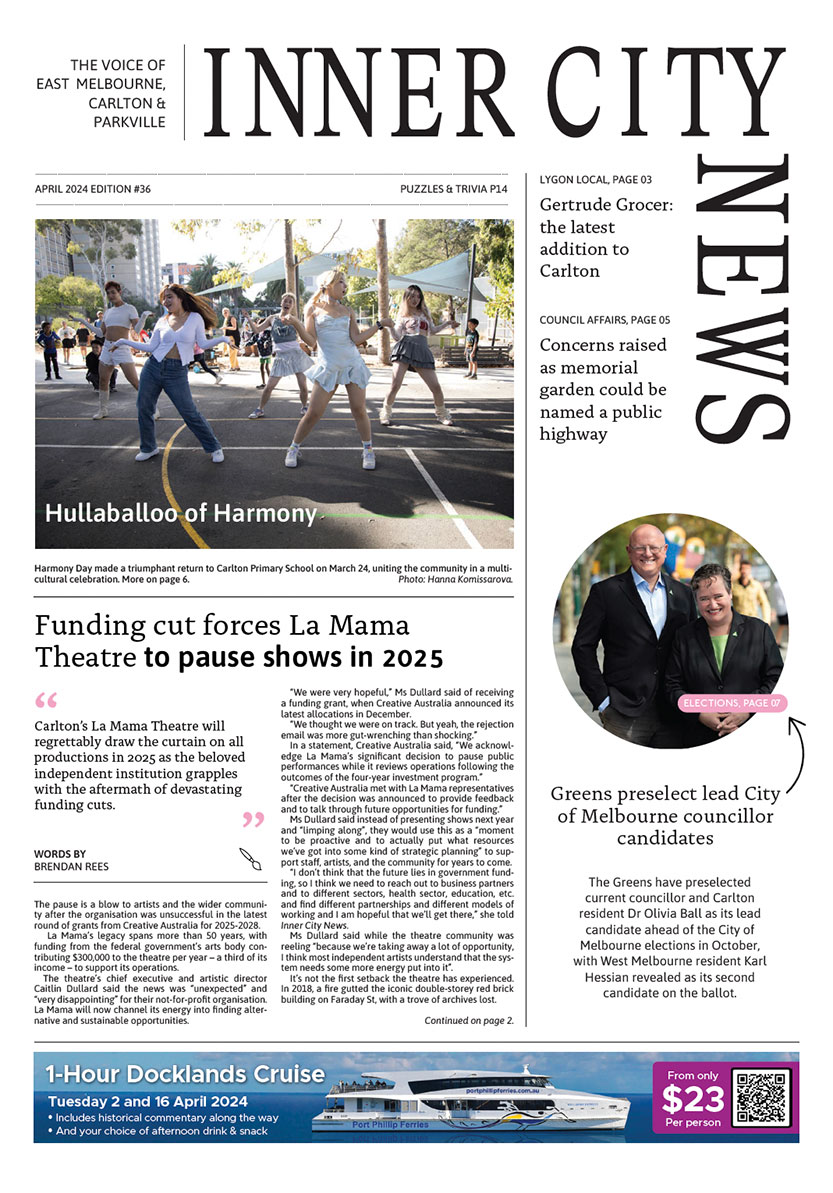Horridus the Triceratops’ new home at Melbourne Museum
The fossil of an enormous Triceratops that died 67 million years ago, leaving behind an almost intact skeleton, was uncovered in Montana USA in 2014.
Canadian experts together with scientists and palaeontologists from Museums Victoria worked remotely over the past year to safely pack and transport its more than 260 bones, at a weight of more than 1000 kilograms, to its permanent home at Melbourne Museum in Carlton.
Nicknamed “Horridus” after its species name (Triceratops horridus), the skeleton, which is about 85 per cent complete, is the star of the Triceratops: Fate of the Dinosaurs exhibition at the Museum.
On arrival at the Museum the hundreds of pieces of this prehistoric jigsaw puzzle were meticulously assembled, by a team of its palaeontologists and conservators, into one of the most globally momentous palaeontological discoveries ever made and the most complete.
CEO and director of Museums Victoria Lynley Crosswell said, “Horridus the Triceratops will attract and inspire wonder in generations of visitors.”
“Horridus is one of the most internationally significant dinosaurs ever discovered and its home is now at Melbourne Museum,” she said.
It is not unusual for museums to collect dinosaur fossils; it is exceptional, however, for a museum to have a specimen of the remarkable quality and significance of Horridus, Museums Victoria's Triceratops
Horridus, a herbivore, or plant-eating dinosaur, grew to seven metres in length and is two metres tall.
The skull, which is 98 per cent complete, is tipped with two slender horns at the brow and a stubby horn atop the nose.
The neck frill spans 1.5 metres, and its skull alone weighs 261 kilograms.
The Triceratops: Fate of the Dinosaurs exhibition is split across two levels and packed with interactive displays, digital projections, animations and soundscapes in a dramatically lit chamber with large-scale projections that illuminate the specimen’s 266 bones, including the most famous trio of horns on the planet, and an entire vertebral column.
To stand in front of the most remarkable herbivorous animal that has ever roamed the Earth will be jaw-dropping and thrilling and a truly unique opportunity to view one of the world’s most important fossil finds in history.
“Not only will Horridus provide an unmatched and unforgettable experience for our visitors but Triceratops: Fate of the Dinosaurs tells an important, timely and inspiring story about the fragility of nature, and our relationship to the changing environment,” Ms Croswell said.
Museums Victoria’s Dr Erich Fitzgerald, senior curator of Vertebrate Palaeontology said, “this is the first time in Australia that we can present in a museum setting a nearly complete dinosaur skeleton of this calibre.”
“Horridus the Triceratops represents the most up to date and cutting-edge articulation of Triceratops and is providing scientists around the world with critical insights not only about this species, but also one of the pivotal moments in Earth’s history. Being permanently housed at Melbourne Museum means this remarkable fossil will be accessible to science for generations to come,” Dr Fitzgerald said.
Tickets to the exhibition will be free with museum entry, however pre-booking is required as entry will be timed •
For more information museumsvictoria.com.au
Image: Dr Eric Fitzgerald photographed by Gene Hyland

Carlton language school championed by Ukrainian refugee



 Download the Latest Edition
Download the Latest Edition